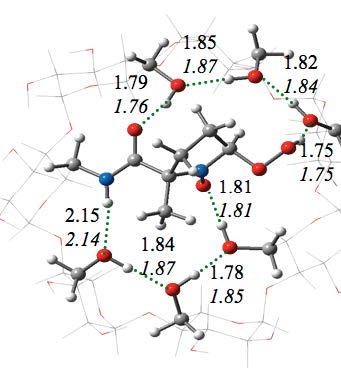The average person rarely considers the antithesis of life-sustaining oxygen. The molecule can, in certain situations, become an aggressive, toxic chemical. At the center of this about-face are oxygen-based radicals − generally called reactive oxygen species (ROS) − that have an unpaired electron. Collectively called “oxidative stress,” changes in ROS concentration accompany many ailments, including heart disease, lung damage, tumor growth and aging.
Because ROS are unstable and short-lived, detection through traditional means has been challenging. However, an Ohio State University team of multidisciplinary researchers is developing more effective means for monitoring them, in part by using the supercomputers at the Ohio Supercomputer Center.
“We’re using computational chemistry models to develop new classes of spin traps,” said Christopher Hadad, Ph.D, a professor of chemistry at Ohio State. Spin traps are chemical scavengers that react with the oxygen-based radicals to create stable compounds; these can then be examined using electron paramagnetic resonance (EPR) spectroscopy.
“Our project includes finding non-toxic spin traps that last long enough to use EPR spectroscopy, can be successfully administered, and uniquely mark each reactive oxygen species, ” Dr. Hadad said.
These computational studies complement experimental efforts by other team members. “The computational chemistry models help narrow our decisions on which spin traps to make and test in vivo,” said Frederick Villamena, Ph.D., an assistant professor at OSU’s Heart and Lung Research Institute. “Eventually, we hope this work will enable the development of medications that prevent oxidative stress, instead of today’s practice of treating the effects after an event."
--
Project lead: Frederick Villamena, Ph.D., Ohio State University Heart & Lung Research Institute
Research title: Development of spin traps for biological free radical detection
Funding source: National Heart Lung & Blood Institute, National Institutes of Health
